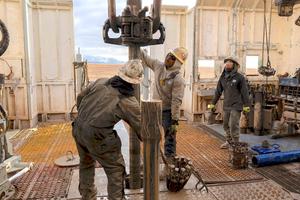Flooding in Pakistan. Asian Development Bank via Flickr
Countries will establish a fund to pay for “loss and damage” from climate disasters by the end of this year, a leading climate diplomat says.
Nations agreed to create such a fund at November’s UN climate negotiations in Egypt, aiming to resolve a long-simmering dispute around who should pay for the fallout from increasingly costly weather disasters. The wealthiest countries, largely clustered in cooler latitudes, have done the most to fuel climate change, but it is the poorest who are feeling its effects most profoundly. The new fund will compensate vulnerable nations for “loss and damage” from extreme weather, but questions remain as to who will pay into the fund and who will benefit from it.
Countries agreed that funds should go towards “developing countries, especially those that are particularly vulnerable to the adverse effects of climate change,” but they have yet to determine who is “particularly vulnerable.” There is also disagreement as to whether China, the world’s biggest emitter, should pay into the fund, given that its historical emissions are modest relative to the size of its population.
This week, representatives from 10 developed countries and 14 developing countries met in Luxor, Egypt, to begin hammering out the details, with negotiators agreeing on a road map to establish the fund, Reuters reports. Asked if the fund will be in place by the next round of UN climate talks in November, Mohamed Nasr, Egypt’s lead climate negotiator, told reporters, “Will it be created? I hope so and I assume so, and this is what we are working towards.”
Negotiators remain divided on whether to address existing shortfalls in climate finance before negotiating the “loss and damage” fund or to work on both simultaneously, Nasr said, adding, “Although they have different views, in many cases there was this mood of cooperation and understanding.”
ALSO ON YALE E360
Deep Decarbonization: A Realistic Way Forward on Climate Change



